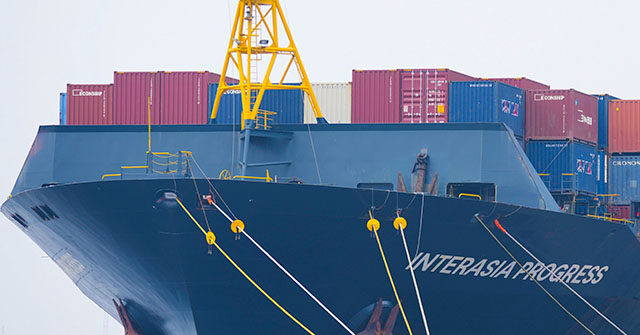The U.S. trade deficit surged to a record high in March as companies rushed to import pharmaceuticals, vehicles, and capital equipment ahead of expected new tariffs from the Trump administration.
The goods and services trade gap widened 14 percent to $140.5 billion, according to Commerce Department data released Tuesday. That marked the largest monthly deficit on record, exceeding economists’ expectations for a $137.2 billion shortfall. The February deficit stood at $122.7 billion.
Driving the March increase was a 4.4 percent jump in imports to a record $419.0 billion, led by a historic rise in pharmaceutical shipments. Imports of pharmaceutical preparations soared 71 percent to $50.4 billion, the largest monthly total ever recorded. Exports, by contrast, rose just 0.2 percent to $278.5 billion.
The sharp rise in imports of medicine helped push the goods-trade deficit with Ireland—home to many pharmaceutical manufacturing sites—up to $29.3 billion, more than double the previous month’s total and surpassing the deficit with China. The goods-trade gap with China shrank to $24.8 billion on a seasonally adjusted basis.
U.S. businesses that rely on imports have been rushing to bring in goods ahead of tariffs, causing what is likely to be a temporary spike. While pharmaceuticals were not included in the initial round of tariffs, the administration has signaled that drug imports could be targeted in the weeks ahead.
Economists noted that the front-loading of imports had a major impact on first-quarter GDP, which contracted by an annualized 0.3 percent. Net exports subtracted nearly five percentage points from growth—the largest drag on record—according to the Bureau of Economic Analysis.
Exports of U.S. services fell in March, led by a sharp drop in tourism, likely a reaction to the weakening dollar making travel in the U.S. more expensive for foreigners on vacation. Services exports declined $900 million to $95.2 billion, their steepest one-month decline since 2022.
Looking ahead, analysts expect the tariff-related surge in imports to reverse in the coming months. Container traffic from China has already slowed since mid-April, and survey data from the Institute for Supply Management show declining import demand from manufacturers and service providers.
The Trump administration has framed its tariff push as part of a broader industrial policy aimed at boosting domestic production, encouraging onshore investment, and reducing strategic dependence on foreign suppliers. While critics have warned of trade disruptions and potential supply chain chaos, White House officials maintain that short-term fluctuations are necessary to achieve long-term industrial security.
Read the full article here
